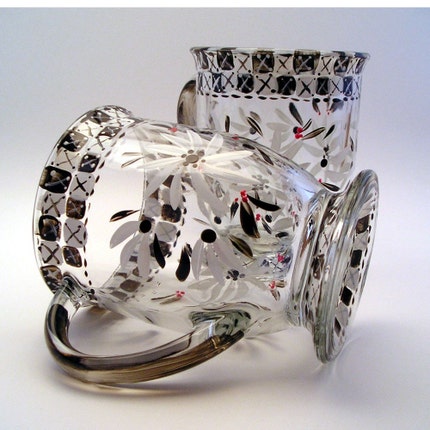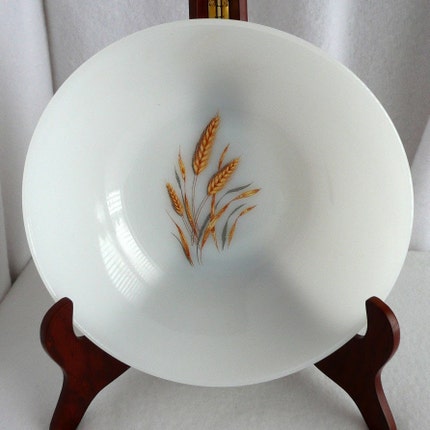This past Saturday, as my husband and I prepared our evening meal, a “breakfast-like supper†consisting of fried eggs, bacon and toast, I began thinking about how common it is for our friends and family members to eat a morning meal at the end of the day. When I was growing up, my father peeled potatoes for crisp potato pancakes on Saturday nights, or he mixed a batch of batter and ladled it into our waffle iron. My husband reports that in his family, it was not unusual to have similar meals on weekend nights. In many family-style restaurants, in fact, breakfast or brunch (a combination of breakfast and lunch items served a la carte) is available all day, particularly on weekends. Is this an American custom? I’m really not sure. Ken Albala, in Food in Early Modern Europe, says that the word breakfast comes from the Latin word disjejunare, which means to un-fast. This word became disnare in the Romance languages, or disner in Olde French—eventually dinner in English. “Thus,†says Albala, “the word dinner actually means breakfast.â€
I do know that dining traditions—and the times that people eat—differ according to geography, culture, occupation and economic conditions. An exchange student I knew in high school, for example, spent a year in Finland, where she learned to eat six meals a day. When my husband and I lived in southern California, it was commonplace for employers to hire a catering truck to bring in a mid-morning snack that consisted of sugary donuts and over-sized blueberry muffins, hot dogs and chili dogs, and almost anything you could heat in a tortilla: tacos, tamales, burritos, enchiladas. Farmers and ranchers usually labor for hours outdoors, right after the sun rises, before they sit down to breakfast, and those on a tight budget often take advantage of what the land produces plentifully: grain-based foods.
In the United States, breakfast traditions have evolved over time. For example, early pioneers followed the lead of Native Americans who grew corn, cooking many corn-based products. These included breads prepared with various methods, such as corn pone pan-fried in oil, griddle-fried Johnnycakes, and ashcakes that were wrapped in cabbage leaves and cooked in the ashes of a campfire. Hoecakes were cooked on yes! the side of a hoe, and corn dodgers were mixed from cornmeal, water, buttermilk and baking powder. It is likely that today’s buttermilk pancakes and tortillas grew out of these early practices.
In addition to enjoying a broad range of corn-based breads, American settlers’ eating habits were heavily influenced by European dining traditions. Colonists of the late 1600s, for example, ate a simple continental breakfast of bread or porridge, accompanied by beer. By the early 1800s, the continental breakfast included a selection of breads and butter, cold meats, coffee and tea. During the Victorian Age (mid-1800s to 1900), Americans—particularly the middle class—had more income, so breakfasts became wide-ranging affairs with many different foods. These included hot cereal, fish, sausages, meat pies, breads with marmalade, butter and jam, bacon and eggs, fruit and vegetables—not too unlike an American brunch, but perhaps heavier in the meat department. Some typical menu items included broiled mackerel, poached eggs with asparagus tips, lamb chops, muffins, and cheese-and-crackers, served with beverages such as orange juice and coffee.
The breakfast cereals of the modern day were not common until the 19th century, when Victorians ate oatmeal. Unlike today’s instant oatmeal, however, they cooked it to death. They soaked the hulled oats overnight in water, then boiled it for four to twenty-four hours. Will Keith Kellogg, a Seventh-Day Adventist, created Toasted Corn Flakes as the result of this tendency to cook oats so thoroughly. He accidentally cooked oats too long; when they dried, they became flakes. But decades before Kellogg’s Battle Creek Toasted Corn Flake Company was founded, the Quaker Oats company registered its cereal as a trademark, and in 1875 began selling oats in boxes. “Quick oats†arrived in 1922, instant oatmeal in 1966, and flavored oatmeal by the 1970s, when many of the younger Boomers were in high school.
But what about the donuts and pastries that also characterize many American breakfasts? When German, Dutch, and Scandinavian immigrants came to the United States, they brought their coffee cake recipes with them. These original cakes were not the sugary concoctions with which most of us are familiar, but bread-like baked goods. Over time, however, they changed. In the kitchens of northern European immigrants, coffee cakes became donuts and pastries filled with sugared fruit, cheese, yogurt and other creamy fillings, accompanied by a cup of coffee and a bit of friendly chat known as a Kaffeeklatsch. According to Evan Jones in his book, American Food: The Gastronomic Story, “. . . . The term coffee klatch became part of the language, and its original meaning—a moment that combined gossip with coffee drinking—was changed to define the American version of England’s tea, a midmorning or midafternoon gathering at which to imbibe and ingest . . . .â€
I’m still not sure how breakfast has evolved into an evening meal, but Regina Charboneau, who writes for the The Atlantic Food Channel, suggests that breakfasts for dinner “may have been borne of lean times, maybe after the Civil War or during the Great Depression.†She explains that during the Great Depression of the 1930s, many people from the Deep South were already accustomed to doing without because boll weevils had destroyed their cotton crops. To ease the economic burden this put on families, people stretched their budgets by preparing breakfast for dinner. Whether or not the same reasoning applies today, breakfast for dinner appears to be a common practice—and a tasty one.
For more information about breakfast history, visit the following Web sites:
- Breakfast for Dinner, by Regina Charboneau
- History of Breakfast In America, by Chris Kimball
- The Food Timeline, by Lynne Olver
© 2009 Judy Nolan. All rights reserved. Please note that the images in this post are owned by the artists and may not be used without permission. Simultaneously published at http://boomersandbeyond.blogspot.com.









We often have breakfast for dinner. I remember my grandparents doing the same. Homemade waffles were a particular favorite! Love that batter bowl.
I love the fish! Very creative! Breakfast foods are the best! Yummy yum, now I'm getting hungry…